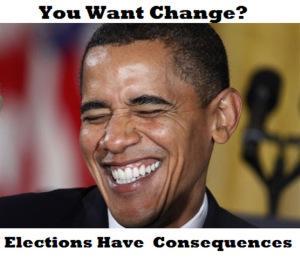The “wealthy” in America can be divided into several sub-groups:
- At the top are the Super Rich — a miniscule proportion of the U.S. population at less than 0.1%.
- Below are the “rich” — Americans who earn $250,000 or more a year, who make up 2% of U.S. households.
- At the bottom are the “nearly rich,” also called HENRYs (high earners not rich yet) — Americans who earn $100,000 to $249,999 a year, who make up 18% of U.S. households.
Together, the “rich” and “nearly rich” comprise the top 20% of U.S. households who account for more than half of total spending.
Anna-Louise Jackson reports for Bloomberg, June 1, 2015, that since so much of the U.S. economy depends on consumer spending (70% of GDP!), when the “nearly rich” and the “rich” aren’t spending nearly enough, it’s a trend that’s weighing on U.S. growth. Retail sales are flat year-to-date, following average monthly gains of 0.6% in the first four months of 2014, Commerce Department figures show.
According to Pam Danziger, president of Unity Marketing Inc., a luxury research company based in Stevens, Pennsylvania, 6 years after the worst recession since the 1930s, neither the “rich” nor the “nearly rich” are spending:
- Nearly rich: Americans who earn $100,000 to $249,999 a year still are “making very careful decisions” when it comes to discretionary purchases. They are “feeling squeezed” primarily because their spending power is curbed by sluggish income gains. They spent 10% less on luxury goods and services in the fourth quarter of 2014, compared with the same period in 2013, according to figures from Unity Marketing. Danziger said while “That’s smart for them, but it’s certainly not good for the economy.”
- Rich: Americans who earn $250,000 or more a year also are cutting back. They spent 17% less on luxury goods and services in the 4th quarter of 2014, compared with the same period in 2013.
Not surprisingly, retailers that cater to these buyers have suffered. Ralph Lauren Corp. and Coach Inc. each has missed analysts’ estimates for sales growth in three of the past five quarters.
Mark Zandi, chief economist of Moody’s Analytics Inc. in New York, explains that “The caution of high-income consumers is key to the lackluster retailing environment” because the top 20% of households make up more than half of total spending.
John Manley, chief equity strategist for Wells Fargo Funds Management in New York, said that many workers feel uncertain about their job security, which acts as a “halter on spending.” This has broader implications for the economy, keeping the Federal Reserve from raising interest rates. But as confidence improves, so too should spending, though both can be “easily shaken” by signs of economic weakness. “The rich often think they’re poor.”
Ron Kurtz, president of the American Affluence Research Center, an Atlanta-based company that focuses on the wealthiest 10% of U.S. consumers, explains that many HENRYs or “nearly rich” have a middle-class mindset, particularly if they live in urban areas. With most of their paychecks funding everyday expenses — principally housing — this leaves less money for discretionary purchases. This group hasn’t enjoyed net-worth gains like their wealthier peers because many don’t have as much money invested in stocks. As a result, “it’s unrealistic for luxury retailers to depend on these consumers as steady buyers on a year-to-year basis,” especially as post-recession volatility has encouraged more saving, he said.
The reluctance to spend on the part of the “nearly rich” accounts for their higher savings rate, which was 8.5% of their disposable personal income in the 4th quarter of 2014 — higher than the 7% average for all consumers.
Even so, there are signs spending may pick up. Average daily expenditures among Americans with household incomes of $90,000 or more rose 3.9% in April to $160 from a year earlier, according to Gallup Inc. in Washington.This measure of self-reported spending has been “gradually edging its way up” after falling to less than $100 a day in 2010, said Frank Newport, Gallup’s editor-in-chief. “The overall trend is positive.”
Zandi expects spending will accelerate once there are “more substantive” gains in wages. Year-over-year increases in average hourly earnings have remained at about 2% since June 2009, Labor Department figures show. As people feel comfortable flaunting big-ticket purchases again, this could spur spending among their neighbors. There’s been a “general cultural shift” away from displays of conspicuous consumption, but some Americans will revert to old habits of “trying to keep up with the Joneses.”
Still, the longer a trend persists, the more likely such behavior becomes habituated, Danziger said. Consumer spending makes up about 70 percent of U.S. gross domestic product, so continued prudence among the “nearly rich” is problematic. “We’re at a real tipping point. The affluent who have spending power are really not spending.”

~Éowyn

